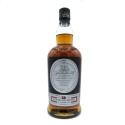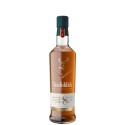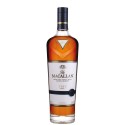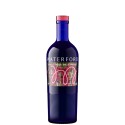Whisky Regions in Scotland
Scottish whisky, also known as scotch, is an alcoholic beverage that is nothing short of special: it is the product of a fine art, in which every aspect of production is given the utmost attention by the master distiller.
Scotland is divided into five main whisky-producing regions, each with its own traditions and unwritten rules that are passed down from generation to generation.
From the smooth, delicate flavor of Lowland single malts to the intense peatiness of Islay's products, each region encapsulates a unique philosophy in the creation of Scotch.
Whether you are a seasoned connoisseur or a novice enthusiast, the journey to discover the whisky regions of Scotland is a timeless adventure that is sure to succeed in captivating you!
Welcome to the world of Scotch Whisky!
Lowland
The Lowland region is a historic cradle of Scotch whisky, where plains mingle with green hills, delineating the border with England.
Lowland's single malts are characterized by a smooth and delicate flavor profile, which comes from a triple distillation that enhances its sweetness.
Its characteristics come from the little or complete use of peat, but also from the mild climate.
Whiskey production in the Lowlands has been subject to displacement to more remote areas to escape the controls of Tax Collectors and to access more and more water sources as consumption continues to grow.
Highland
In the Highlands, the landscape changes completely. Mountains take the place of hills, while beaches become jagged cliffs.
This is perhaps the most representative region of Scotland, characterized by a harsh climate and the constant blanket of clouds, generating a low temperature range between summer and winter temperatures.
This is a crucial aspect in the production of whisky because it prevents the continuous expansion of the wood in the casks.
This means that the casks last for many years and the interaction between the external environment and their contents is slowed down.
Only in this way is it possible to give rise to long aging, even tens of years, causing the whiskies to be enriched with those aromas that only time can impart.
Currently, Highland distilleries are mostly distributed on the coast, leaving room for different expressions in the region itself.
Speyside
The Speyside region is a water-rich valley; it is no coincidence that half of Scotland's whiskey distilleries are located here, more specifically near the Spey River.
Curious how none of these distilleries draw water directly from the Spey River, in the form of respecting what we might call the "engine" of the region.
Along the route of the river's many tributaries we find numerous distilleries, even a few kilometers apart.
In the village of Dufftown, of only 2,000 inhabitants, there are as many as 7 distilleries, including Glenfiddich, Scotland's largest whiskey distillery, with its 10,000,000 liters produced annually.
Campbeltown
Campbeltown is a peninsula facing the Atlantic that holds the glorious past of several distilleries.
In fact, in the early 20th century it was the largest region in scotch whisky production, with more than 30 active distilleries.
Its proximity to the island of Islay meant that Campbeltown's distilleries picked up the strong, bold, marine body and flavor of the area's typical whiskies.
Despite being strategically located, making it an excellent base for exports to America, there are currently very few distilleries left in operation.
Probably, mismanagement of marketing and overproduction have led to the depletion of the Campbeltown market.
Islay
As early as the early 1800s, Islay counted the presence of dozens of distilleries, precisely because of its remote location, which made it difficult for tax collectors to reach.
It can be said that it is the region that has made the use of peat its main characteristic.
The heavy use of peat is typical of the south coast, with this flavor being combined with medicinal and savory aromas, resulting in a balance of intense forces.
Islay whiskies are uncompromising and are probably the most representative of the rough character of Scotland: one could say that this island is almost a Scotland in mintage!
The island's few thousand inhabitants have always offered warm hospitality and maintained a community spirit that is truly unique.







